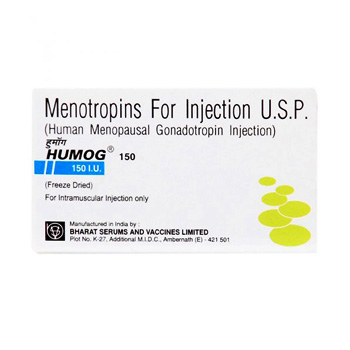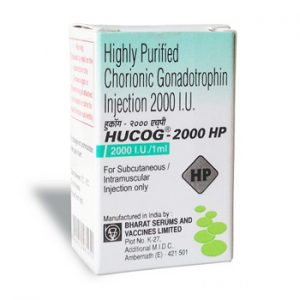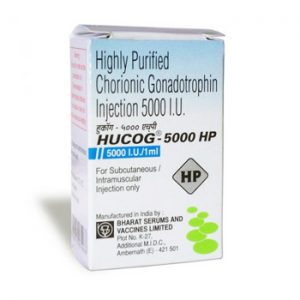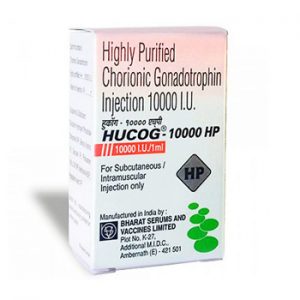Description
Humog 150 IU injection
manufacturer
Bharat Serums & Vaccines Ltd.
Composition
Human menopausal gonadotropin
Description
Human menopausal gonadotropin, which is the main component of Humog 150 IU Injection, is obtained from the urine of women who have reached menopause. It is used to treat male and female infertility. It is also used in combination with other hormonal medicines for in vitro fertilization and assisted reproductive procedures.
Uses of Humog 150 IU injection
What is it prescribed for?
Female infertility
Male infertility
Assisted reproductive technique
Side effects
Serious and Minor Side Effects for Humog 150 IU Injection
- swelling
- Stomach ache
- Pain in the lower abdomen
- infections
- Nausea or vomiting
- Rapid weight gain
- Allergic skin reaction
- Irritability
- Breast enlargement
- Headache
- Insomnia
- Pain at the injection site
- Unexpected vaginal bleeding
- Unusual tiredness and weakness
Humog 150 IU Injection Salt Information:
Uses of Humog 150 IU injection:
FSH and LH are important for the development of follicles (eggs) produced by the ovaries and for the development of sperm. Menotropins are used to stimulate ovulation (the release of an egg) when a woman's ovaries can produce a follicle, but hormonal stimulation is lacking.
Side effects of Humog 150 IU injection:
Ovarian enlargement, ovarian cysts, enlarged abdomen, gastrointestinal tract disorders (eg, nausea, vomiting, diarrhea, abdominal pain or cramps, swelling), inj site reactions, headache, dizziness, tachycardia, dyspnoea, tachypnea, hypersensitivity reactions. Multiple births and miscarriages. Potentially fatal: ovarian hyperstimulation syndrome, severe lung conditions (E.G atelectasis, acute respiratory distress syndrome) and thromboembolic events.
Drug interactions of Humog 150 IU injection:
Increased follicular response with clomiphene citrate. Higher dose of menotropin required when using the hormone agonist that releases gonadotropin for pituitary desensitization.
Contraindications of Humog 150 IU injection:
Pregnancy and breastfeeding. Enlarged ovarian cysts or ovaries (not due to polycystic ovary syndrome), uncontrolled thyroid and adrenal dysfunction, organic intracranial lesions (EG pituitary tumors), abnormal genital haemorrhage of unknown cause, presence of other causes of infertility other than anovulation (a unless they are candidates for IVF), hormone-sensitive tumors EG Breast, uterus, prostate, ovaries or testes. Primary ovarian failure, malformation of the sexual organs or fibroid tumors of the uterus Incompatible with pregnancy, structural abnormalities such as tubal occlusion (unless superovulation is induced), ovarian dysgenesis, absent uterus or premature menopause.





Reviews
There are no reviews yet.